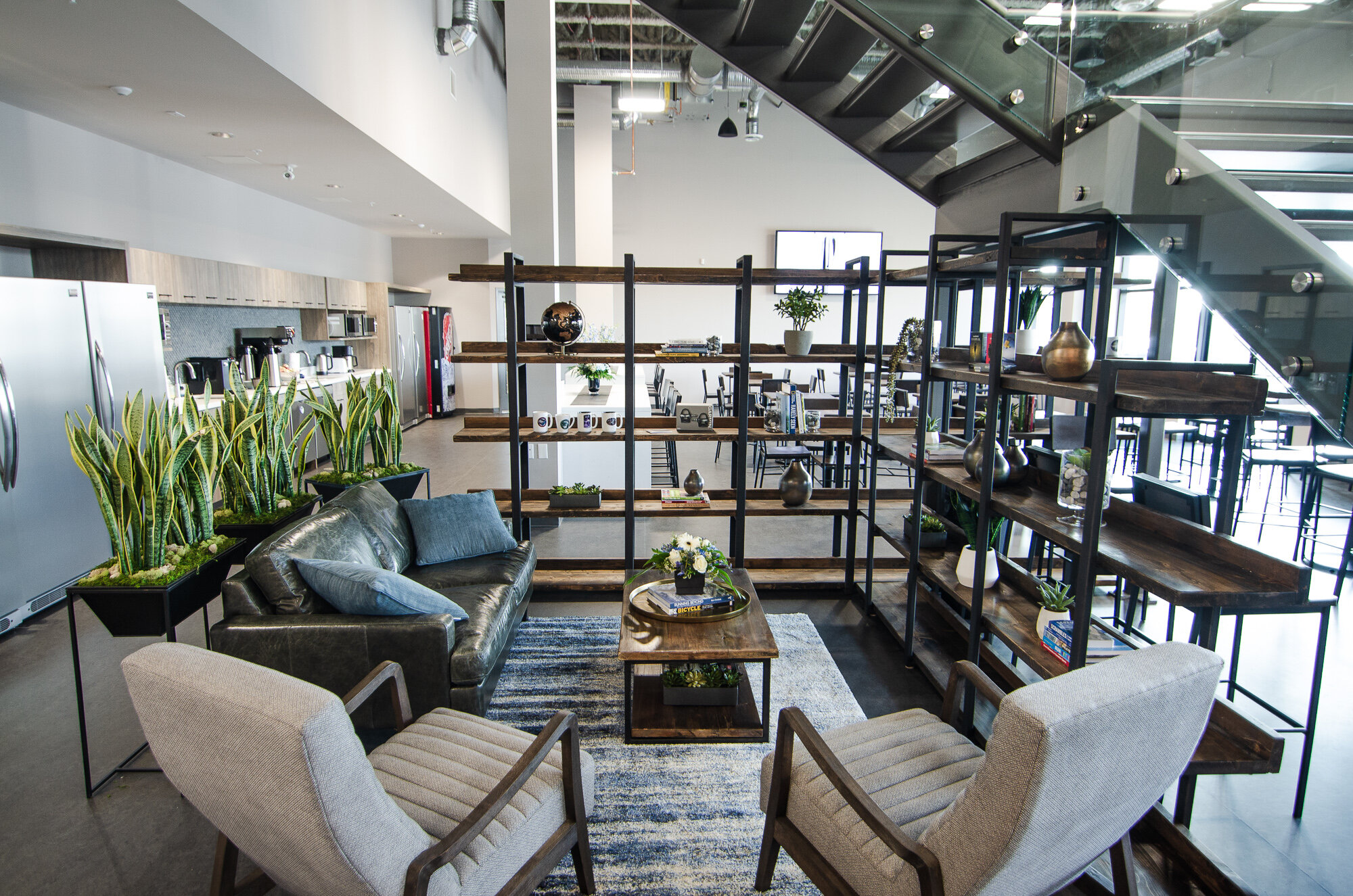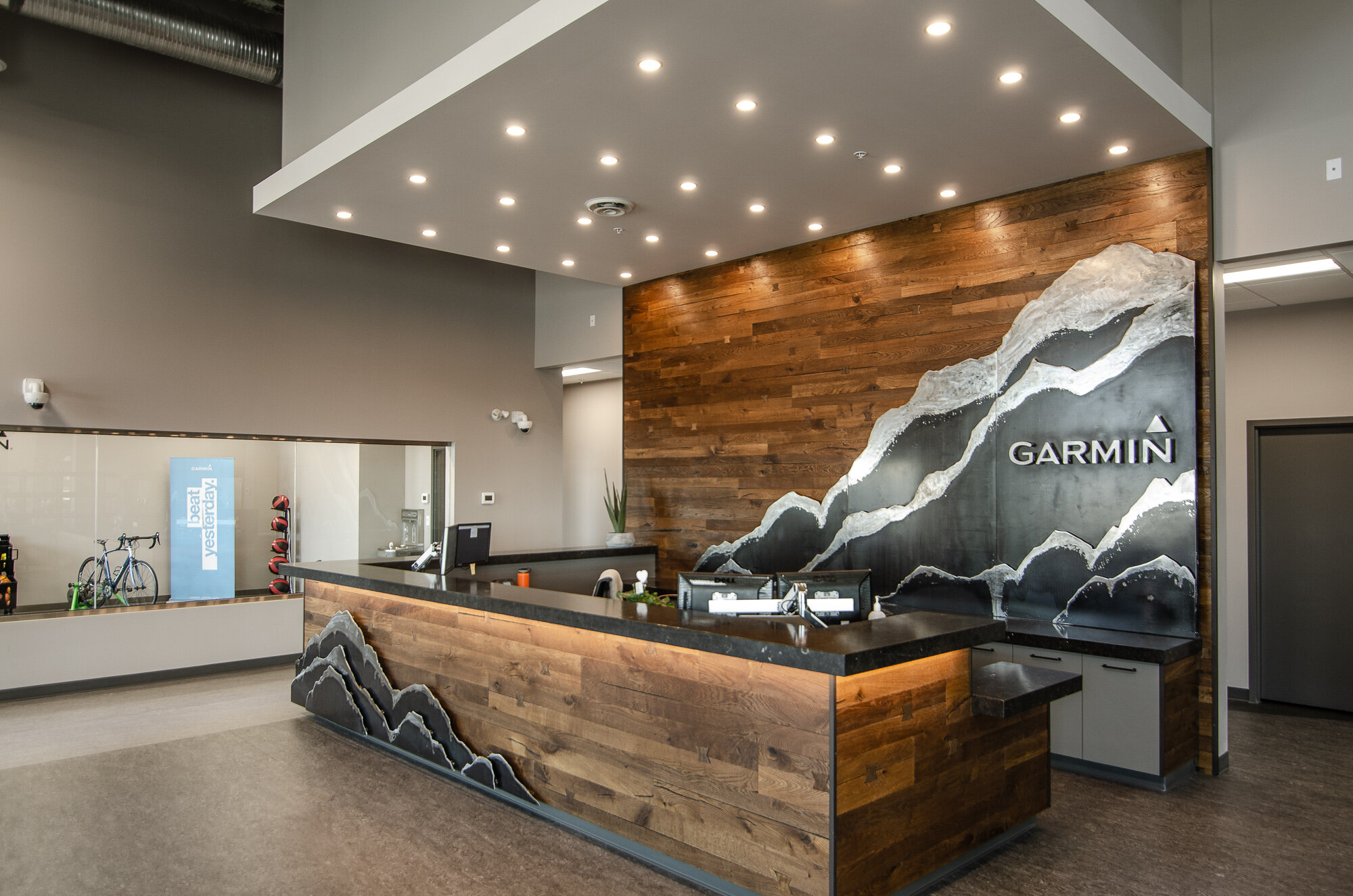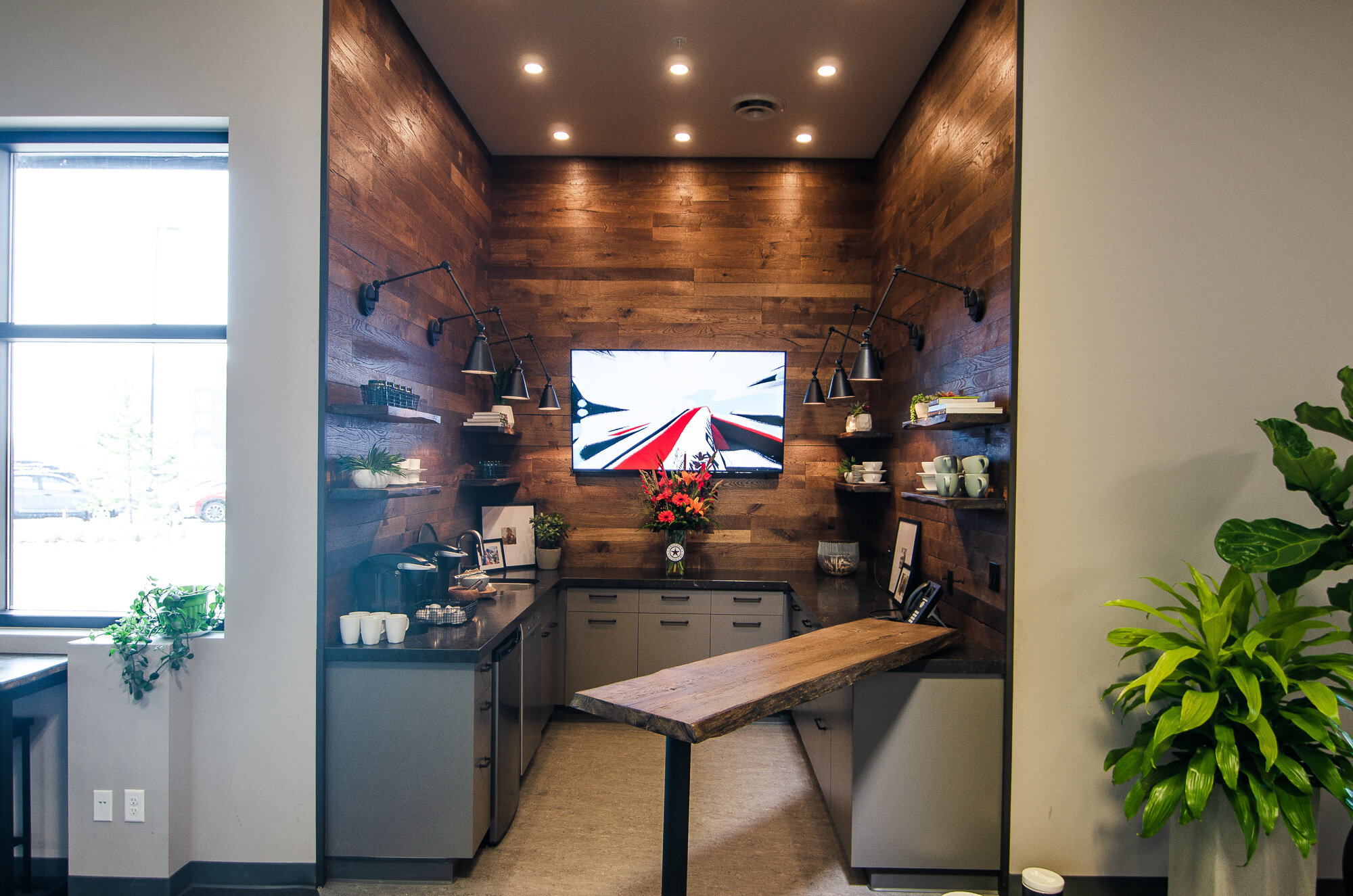Garmin Canada: Going the distance in Cochrane
In picturesque Cochrane, Alberta, just 30 minutes from Calgary, a highly trained engineer smashes a high-tech bike pedal with a rock. Another handful are attached to bikes ridden hard in the nearby Rockies. A GPS-enabled watch is doused in sunscreen and subjected to extreme temperatures. Seeing first-hand how their products stand up to the kinds of pressures they will encounter under rugged outdoor conditions is part of Garmin Canada’s quality assurance process — and part of the corporate culture.
Catherine Preston, Marketing & Communications, Garmin Canada
THE LITTLE STARTUP THAT (REALLY) COULD
In 1998, a trio of Dynastream Innovations engineers began tinkering around in a garage in Cochrane; by 2003 they landed on what they called “the ANT wireless protocol,” the world’s first ultra-low-power wireless standard.
Today, that technology is integrated into countless products globally – including, perhaps, that fitness tracker on your wrist. Dynastream was acquired by its long-time customer Garmin in 2006; in 2018, Garmin made Cochrane their official Canadian headquarters.
Head over to the Garmin website – 95 per cent of the devices you see for sale in the Outdoor Recreation and Sports and Fitness sections of the site – from GPS watches for triathletes to dog-training devices to onboard bike computers – features technology elements developed in Cochrane.
“One of the reasons we all love what we do is that our family and friends could be using the watches or power meters that we helped develop in our office,” said Catherine Preston, one of the marketers at Garmin. “Walking into a retailer and seeing these products on store shelves is extremely rewarding.”
Garmin Canada has three divisions:
Connectivity: All Garmin products exist in a connected ecosystem – sensors must transmit their data to a display, wearables can receive notifications from your phone, and all devices sync activity information back to Garmin servers via USB, Bluetooth or Wi-Fi. This team ensures that all this data gets where it needs to go, without any customer intervention.
Cochrane Wearable Platform Technologies: This team's work is incorporated into more than 40 wearables, enabling essential features for Garmin’s fitness and outdoor segments. A notable technology developed by this team is Garmin wearables’ wrist-based (or optical) heart rate monitor.
Products: Nearly two decades ago, the Dynastream team came up with the idea of putting accelerometers in running shoes to capture an athlete’s speed and distance. That idea has spawned an entire discipline of embedded sensor engineering that powers many of Garmin’s most loved products.
The three divisions have to work seamlessly, points out Robyn Schmidt, Software Engineering Manager.
“All our products need to talk to other things: watches, phones, computers,” said Schmidt.
“We’re building a system that works like magic for the customer but it’s incredibly complicated. Software takes the raw signal from embedded sensors and does the filtering and the other ‘secret stuff’ to deliver a useful piece of data to the athlete; the design of the radio antenna has to consider how your watch sits on your wrist; and all the electrical components have to work perfectly together, usually in a really small space that is also lightweight and aesthetically pleasing. We’re continuously adapting and evolving to push boundaries and provide new use cases to our customers.”
Every day, the Canadian R&D team in Cochrane interacts with at least some of the other 82 Garmin offices worldwide. Engineering HQ is in Kansas; in South Africa, engineers have developed radar technology so cyclists know when a vehicle is approaching; in the Netherlands, they design and engineer indoor bike trainers and training software. Manufacturing engineers at Garmin’s Taiwan-based factories are experts at building sophisticated, high-quality products at scale.
Garmin Canada
LIVING THE GOOD LIFE IN COCHRANE
Nestled in the foothills, on the banks of the Bow River, Cochrane (population 34,500) is one of Canada’s fastest-growing towns. It takes just half an hour, on average, to drive west from inner-city Calgary to Garmin Canada’s high-tech headquarters.
It’s a gorgeous drive, and Preston admits that she regularly pulls over to take photographs of the mountains as they soar into view. Many Garmin employees choose to live in Cochrane itself, which is noted for its good schools, attractive housing options, and proximity to the mountain parks. Banff is about an hour away, Kananaskis about 45 minutes.
Jim Rooney, Garmin Canada’s Managing Director and Dynastream co-founder, states that the town itself is key to company growth and product development.
“Our core research and development for fitness and outdoor products demands our location be one that can support growth and innovation while providing an exceptional outdoor lifestyle.”
The brand-new Garmin Canada building features high-tech labs and engineering workspaces, but also caters to the many fitness and outdoor pursuits aficionados among its employees. Of course there’s an onsite gym, which all employees are encouraged to use, but there’s also a well-used bike room (where, even when it’s minus 20 outside, you will find dozens of employee bikes), reimbursement for running and cycling race fees, and a generous employee discount on Garmin products.
At 45,000 square feet, Garmin HQ currently houses about 160 of the 200 people it was envisioned to hold when it opened just three years ago. The building was designed so that adding a third floor would be as easy as possible. Adding the teammates and business necessary to justify that third floor is one of the things driving the Garmin Canada team. “We have a vision: as we continue to provide great innovative products and technologies for Garmin’s business, we will continue to grow, and need it.” said Schmidt. “We’re often asking ourselves: ‘What’s it going to take to get to the third floor?’”
RF chamber, Garmin Canada
THINKING BIG — AND SMALL
Think of how small and light a bike pedal is. Now, imagine including within that tiny space such things as onboard batteries, antennae and a suite of high-precision sensors. That, in essence, is the challenge that Garmin engineers face when developing the world-renowned Rally family of cycle pedals.
“Think about how hard it is to create that product,” said Preston. “It’s hard to implement something from the engineering side that will be viable for the business. The time to market is snappy. On top of that, it has to provide a great user experience. And all within the area of a bike pedal.”
The latest big product release from the Garmin Canada R&D team is the Rally family of bike power meters, featuring three different pedal designs. They’re the latest in a series of pedal-based power meters Garmin first introduced a decade ago to near-universal acclaim. You can install the Rally like any other pedal and swap it out easily from bike to bike. The device measures a rider’s total power, cadence, the power difference between the left and right leg and other metrics that help serious cyclists see where their strengths and weaknesses are and train accordingly. One-hundred-and-twenty hours of battery life lets you connect to Garmin and third-party training apps. And it all weighs just 320 grams.
Garmin Canada
GOING THE DISTANCE
When the Garmin team was working on their first swim tech product (now found in many commercial products), they received a report from a user that their device didn’t seem to be measuring distance accurately.
The wrist-worn device used an accelerometer to determine which stroke the user was doing, counted the number of strokes, and recorded the changes that happen in a pool when you turn around.
Schmidt discovered a bug in the software pertaining to accumulating large distances and made adjustments. She was pretty certain she had fixed the problem, but just to make absolutely sure that the fix was going to work in the pool, she called up the Director of Engineering and sent him to the Cochrane pool to do a 5-kilometer test swim.
It’s not just the aquatic toys that have all the fun. When the company was developing the Rally XC Power Meter Pedals, 125 test riders – including many Garmin employees – put in 6,000 rides, 11,000 hours and 200,000 kilometers. That’s more than five times around the earth.
TEAM GARMIN
If you thrive on a fast-paced innovative culture, there’s probably a place for you at Garmin Canada. Whether you’re a software, electrical or mechanical engineer, the one quality you must have is a passion for building consumer products.
“We have found that if people use our products and have an outdoor lifestyle, it helps them be a better engineer,” said Schmidt. “After all, an idea can look slick at the desk, but if you take it out for a run and it’s not a great user experience, then the job’s not done.”
Garmin Canada
That attitude and desire to invent useful new things is true across all disciplines at Garmin. Job applicants are generally asked “Why Garmin?”, with strong answers including “I love bikes,” “I like hard problems,” and “I’m a passionate engineer and I love algorithms.” You don’t have to be a runner or a cyclist, or any kind of athlete at all (although once-sedentary employees confide that they’ve been converted to outdoor pursuits since joining the team), but you should be the sort of person with a passion that working at Garmin can fulfill.
“This year, we’re looking to hire a substantial number of positions across all three disciplines (software, mechanical, electrical), especially mid to senior-level engineers.” They’re also hiring engineering and computer science students.
Garmin has a strong university internship program too that supports approximately 20 third and fourth-year students in mechanical, software and hardware engineering. Hardware and mechanical internships last for 16 months, and software internships four to 16 months, depending on the co-op requirements of participating Western Canadian universities. Intake periods are January, May and September, and on average Garmin has around 30 interns working with them at any given time. Interns receive many of the same benefits as full-time employees and often graduating students are hired for full-time positions at the end of their work-experience term.
WHAT’S NEXT
When asked what’s on the horizon, Schmidt is a little hesitant to say. It’s not (just) because of trade secrets, but because the product cycle is so fast: 12 to 18 months, in fact.
“We don’t know precisely what the next product will be five years from now, but we do know that it will push boundaries and create new magic.”
Preston adds: “Maybe it will make your coffee, too!”
Are you ready to make moves in Calgary’s tech scene, working with forward-thinking companies like Garmin Canada? Head to our Live Tech Love Life careers page and see what opportunities might be out there for you.






